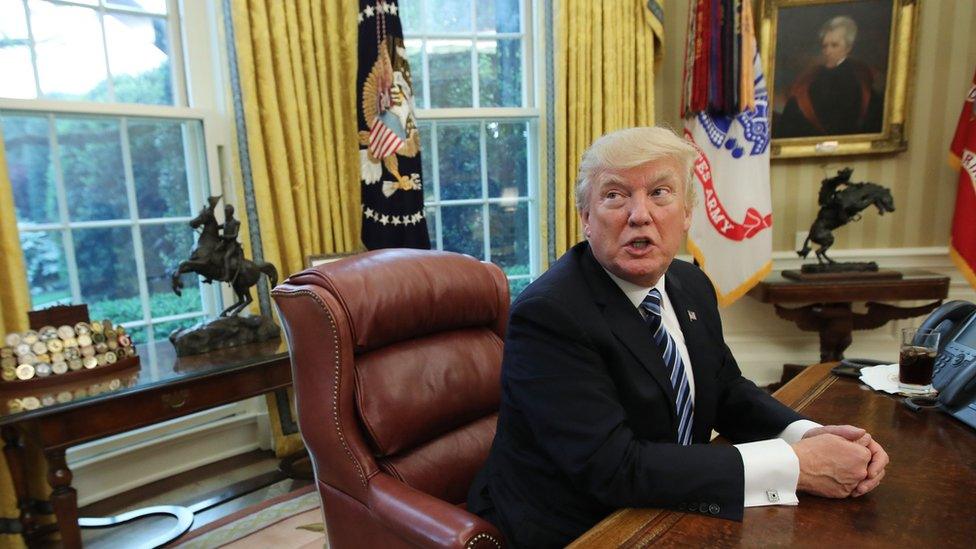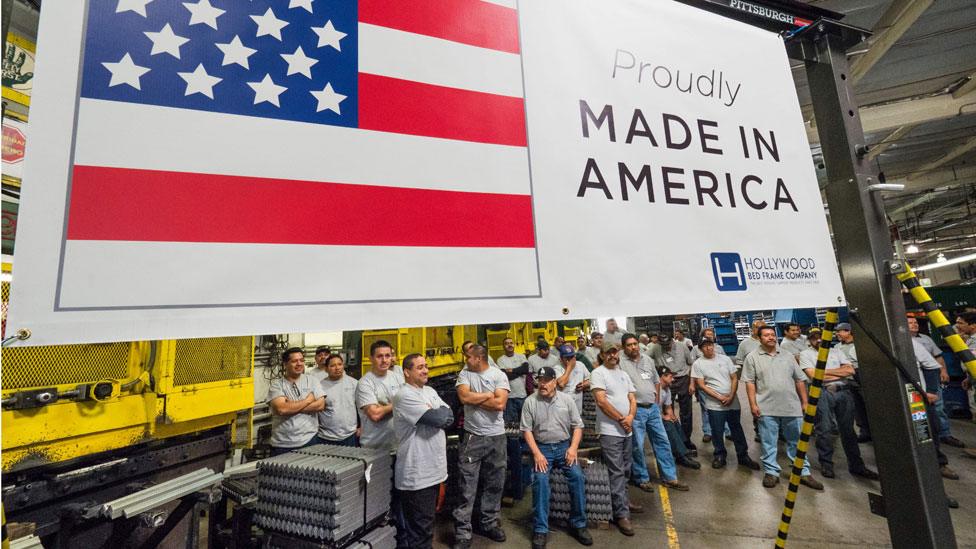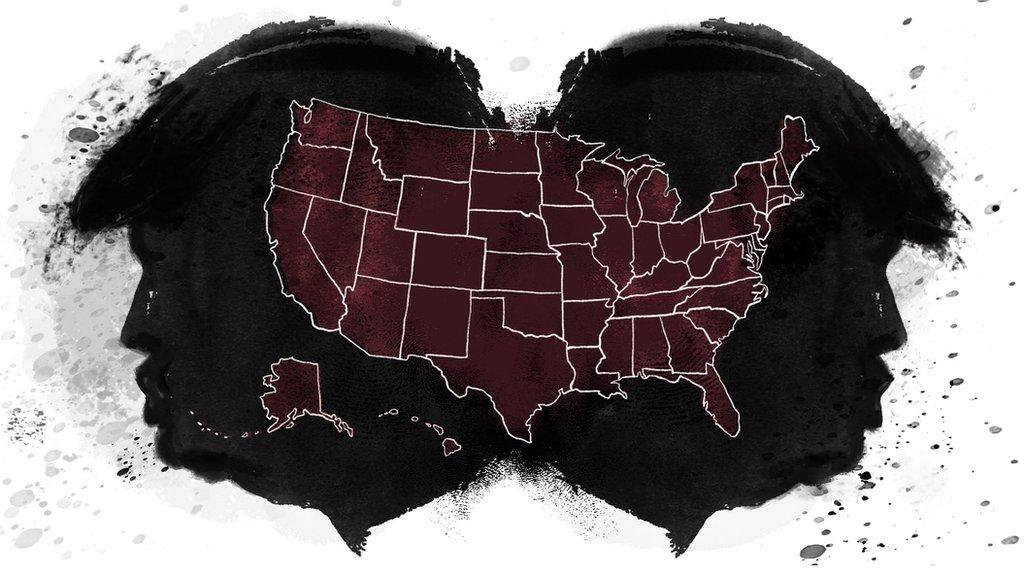US growth rate hits three-year low
- Published
- comments

The US economy slowed dramatically in the first three months of the year, according to official data, external.
GDP expanded at an annual rate of 0.7% in the first quarter - the slowest rate since the first quarter of 2014.
It will be unwelcome news for President Donald Trump who, during his election campaign, made a pledge to raise growth to 4%.
In a bid to fulfil that promise, on Wednesday the White House proposed slashing the rate of corporation tax.
Treasury Secretary Steven Mnuchin unveiled President Trump's tax blueprint, which aims to cut the business tax rate from 35% to 15%.
The plan also proposed an incentive for companies to bring back money held overseas and a cut in tax rate for individuals, although the plans were light on detail.
What will Trump's tax plan actually do?
Trump seeks tax windfall for business
The Trump administration may be reassured by the trend in recent years for growth figures to be depressed in the first quarter, but then pick up later in the year.
"US GDP figures are typically weaker in the first quarter, so this reading is in line with the seasonal trend," said Nancy Curtin, chief investment officer at Close Brothers Asset Management.
"We haven't yet had the expected fiscal stimulus from Trump, the effects of which may not be seen until the end of this year or the start of 2018."

The annualised first quarter growth rate of 0.7% was less than the 1% analysts had been expecting, and a slowdown from the 2.1% growth rate seen in the final quarter of last year
The slowdown was down to stagnant consumer spending, economists said.
"Household spending was held down by a drop back in motor vehicle sales from a near-record high at the end of last year and the unseasonably warm winter weather, which depressed utilities spending," said Paul Ashworth, chief US economist at Capital Economics.
But he thinks consumer spending will "rebound" as personal income showed healthy growth and data suggests that consumer confidence remains high.
Close Brothers' Ms Curtin also pointed out that other data suggested strength in the US economy .
"While investors might be disappointed with the reading, it has been a steady start to the year with inflation looking benign, a resilient jobs market and positive PMI [purchasing managers'] data."

Analysis: John Mervin, New York business editor
Just two days ago, as they released President Trump's proposals for large tax cuts, his Treasury Secretary, Steven Mnuchin, and his National Economic Director, Gary Cohn, were boasting that an annual GDP growth rate of 3% and above was possible. Indeed their tax plan relies on higher growth to make up for the lost revenue of lower tax rates. And the president himself likes to talk about 4% growth! Today's data shows how bold those claims are. The fact is the US economy has been in steady-but-slow growth mode for years. While it's true that the first three months of a year are usually particularly weak, and that growth will likely pick up in the coming months, it's also the case that a 3% annual growth rate hasn't been consistently delivered since the 1990s. So whatever it is that would boost growth - be it tax cuts or large government spending - is likely to require far-reaching legislation from Congress. Based on the first 100 days, there are few signs that the Trump administration can secure that.

- Published11 April 2017

- Published26 April 2017

- Published27 April 2017
